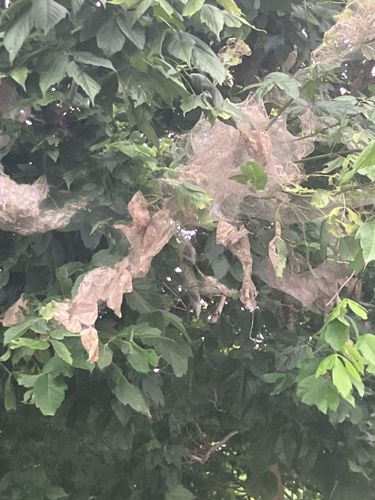Fall Webworm
Scientific Name: Hyphantria cunea
Order & Family: Lepidoptera, Erebidae (formerly Arctiidae)
Size: Caterpillars typically grow to 1-1.5 inches (2.5-4 cm) in length. Adult moths have a wingspan of 1-1.5 inches (2.5-4 cm).

Natural Habitat
They are commonly found in deciduous trees and shrubs, particularly in wooded areas, orchards, and urban landscapes across North America.
Diet & Feeding
Fall webworm caterpillars are defoliators, feeding on the leaves of a wide variety of deciduous trees. They prefer pecan, walnut, hickory, elm, and fruit trees, but can infest over 100 species of trees and shrubs.
Behavior Patterns
Fall webworms are highly social during their larval (caterpillar) stage. They construct large, silken webs that enclose foliage, which they then feed upon. As they grow, they expand their web to incorporate more leaves. They undergo several instars within the web before leaving to pupate in the soil or bark crevices. There can be one or more generations per year depending on the climate.
Risks & Benefits
Risks: Primarily an aesthetic nuisance, their webs and defoliation can be unsightly. While mature trees can usually tolerate defoliation without significant long-term harm, repeated heavy infestations can weaken trees, especially young or stressed ones. Benefits: They can be a food source for natural predators like birds and parasitic wasps, contributing to the food chain.
Identified on: 8/20/2025